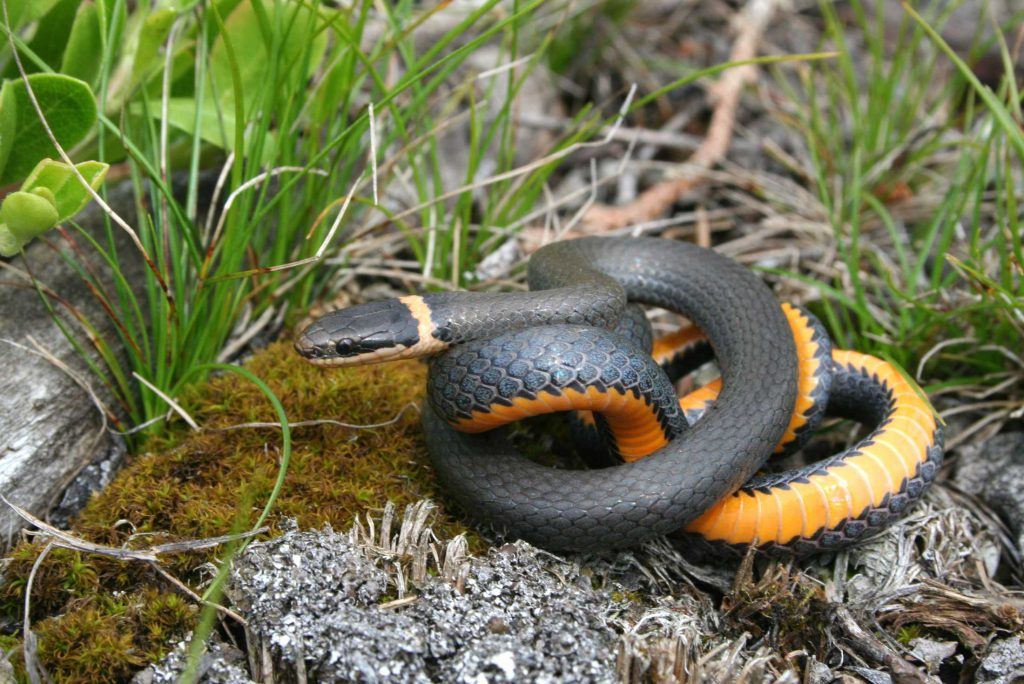Ontario Nature Blog
Receive email alerts about breaking conservation
and environmental news.
© Lora Denis
Green frog © Catherine Jimenea
Having grown up in the Middle East, in the midst of either a bustling city or an open desert, going to the Bruce Peninsula for the Remarkable Reptiles Weekend and a Massasauga snake survey was like going to Disneyland for me.
I spent the summer with Ontario Nature as an intern with the Reptile and Amphibian Atlas. But this was the first time I had the opportunity to hike through Malcolm Bluff Shores Nature Reserve. Working alongside conservation science manager John Urquhart, we quickly spied a northern watersnake half-hidden under a rock. It was a beautiful creature with its long, coiled, dark, bluish-grey body almost camouflaged on the rocks. Because watersnakes may bite when handled, we left it alone. Afterwards, we saw a juvenile northern watersnake as well as a green frog. It turned out that the trail that runs along the top of the reserve was littered with green frogs.
Our next stop was the Bruce alvar where we searched in vain for Massasauga rattlesnakes, but found around 10 ring-necked snakes. I marvelled at the navy blue limestone of the alvar with its labyrinth cracks no doubt housing numerous small creatures.

The Remarkable Reptiles Weekend was held at the Visitor Centre of the Bruce Peninsula National Park and Fathom Five National Marine Park. A team from Sciensational Sssnakes!! brought live reptiles and amphibians. I fell for a western hog-nosed snake that settled on my arm with its nose pointing up in the air.
On Sunday we finally found the Massasaugas: three adults and one juvenile! Giving them space, even though they had a short striking distance, we took pictures, awed by these small-but-dangerous animals with their rattlers upright and rattling like a buzzing insect.
John and I had one more adventure in store for us before the weekend ended. Driving back to Toronto, we spotted a turtle crossing the road. John pulled over and we watched, helpless, as a car zoomed by, swerving at the last minute, narrowly missing the turtle. John dashed out and moved the turtle out of the way. To my joy, the turtle was a snapper! I was ecstatic as I had never seen a snapper in the wild before. If there were more people like the driver who swerved out of the turtle’s way, any species-at-risk population may just have some success in surviving.
Massasaugas and a snapper all in one day? It was surreal for me!

Proposed 413 Route, Old School Road with farm and escarpment view © Noah Cole